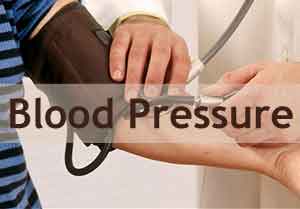- Home
- Editorial
- News
- Practice Guidelines
- Anesthesiology Guidelines
- Cancer Guidelines
- Cardiac Sciences Guidelines
- Critical Care Guidelines
- Dentistry Guidelines
- Dermatology Guidelines
- Diabetes and Endo Guidelines
- Diagnostics Guidelines
- ENT Guidelines
- Featured Practice Guidelines
- Gastroenterology Guidelines
- Geriatrics Guidelines
- Medicine Guidelines
- Nephrology Guidelines
- Neurosciences Guidelines
- Obs and Gynae Guidelines
- Ophthalmology Guidelines
- Orthopaedics Guidelines
- Paediatrics Guidelines
- Psychiatry Guidelines
- Pulmonology Guidelines
- Radiology Guidelines
- Surgery Guidelines
- Urology Guidelines
A multilevel, multi component approach recommended for better control of BP

Current clinical guidelines recommend lower blood pressure targets for the general population, yet control remains elusive for most. A new study suggests that patients with hypertension can best achieve blood pressure control with a multilevel, multicomponent approach that includes physician- and non-physician-led interventions. The findings from a comparative effectiveness review are published in Annals of Internal Medicine.
Hypertension is the leading risk factor for cardiovascular disease. Despite strong evidence that antihypertensive medications and lifestyle modifications reduce blood pressure and subsequent morbidity and mortality from cardiovascular disease, hypertension control rates hover between 25 and 40 percent, a rate that has remain unchanged for the past 40 years. As such, strategies are needed to increase control rates.
Researchers from Tulane University reviewed published research to assess effectiveness of eight implementation strategies for blood pressure control in adults with hypertension compared with regular care. They found that multilevel, multicomponent strategies, such as team-based care with medication titration by a nonphysician clinician, team-based care with medication titration by a physician, and multilevel strategies without team-based care, lead to reductions in systolic blood pressure of around 7, 6, and 5 mm Hg, respectively. Patient-level strategies resulted in systolic blood pressure reductions of around 4 mm Hg for health coaching and 3 mm Hg for home blood pressure monitoring. Trends were similar for diastolic blood pressure reduction.
According to the researchers, these findings provide evidence that multilevel, multicomponent implementation strategies are most useful and should be recommended in clinical practice and public health policy for hypertension control in communities.
For more details click on the link : http://annals.org/aim/article/doi/10.7326/M17-1805

Disclaimer: This site is primarily intended for healthcare professionals. Any content/information on this website does not replace the advice of medical and/or health professionals and should not be construed as medical/diagnostic advice/endorsement or prescription. Use of this site is subject to our terms of use, privacy policy, advertisement policy. © 2020 Minerva Medical Treatment Pvt Ltd